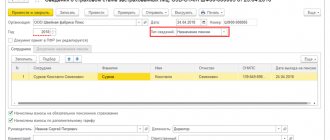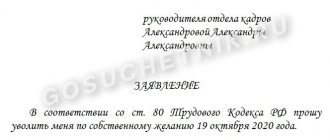In this article we:
- Let's look at what industrial injuries are, what they are, in what cases injuries on the way to work are considered industrial;
- We will find out what the employer faces in the event of a work-related injury;
- we will determine how much time is given to complete documentation related to work-related injuries;
- Let's figure out why employers and employees are equally interested in timely registration of work-related injuries and investigation of the causes of their occurrence.
What types of injuries exist?
Work-related injuries include bodily injuries that workers may receive while performing work on the instructions of their employers. This can happen directly on the organization's premises or outside of it. In this case, it is important that the victim performs work that is part of his job responsibilities or has been assigned by management. For example, if a courier, after a call from his boss, went into a store to buy paper for an office printer and twisted his ankle, this would be considered a work-related injury. And if this happened when he went to the store to buy sausages for a home-cooked dinner, then the injury will not be considered work-related.
Work-related injuries that occur on the way to or from work do not apply. An exception is if the worker was traveling in a vehicle owned by the enterprise, went on a business trip or official trip, or was heading to the place where work will be performed or back. Also not associated with production are self-harm and injuries that occurred solely due to alcohol intoxication or toxicological poisoning of the victim (unless this is related to a violation of technological processes at the enterprise).
VIDEO TEXT:
To properly organize an accident investigation, it is necessary to correctly classify injuries:
1. Fatal accident. This is the most unpleasant thing that can happen. When a fatal accident occurs, the organization creates a very serious commission, the chairman of which is necessarily a representative of the federal labor inspectorate. There is criminal liability for a fatal accident.
2. An accident classified as severe. A serious accident is a case with 100% disability with a duration of treatment or transfer of the employee to another job. According to the investigation procedure, a serious accident is equivalent to a death. It also provides for criminal liability.
3. Accident classified as mild. These are the accidents that most often occur. When a person damaged something, broke something, he received treatment, and there were no health consequences for him. The worker, as he worked in his profession, will work in it. When a minor accident occurs, we create a commission at our enterprise and do not invite anyone. There is no criminal liability in this case. In practice, an organization may have 10 accidents in a quarter, but there will be no criminal liability.
4. Accidents classified as group accidents. This is when an accident injures 2 or more workers at the same time. The difficulty with the investigation is that some workers will have minor injuries and be classified as Minor Accidents, while others will have more serious injuries. Accordingly, they are equated to heavy.
5. Microtraumas. From the point of view of legal law, the concept of “microtrauma” does not exist. There is a concept called “non-disabling injury”. Microtrauma is when an employee is injured and goes to a medical organization, they bandage him, and treat the wound. At the same time, doctors say that you can work and there are no serious health problems. And this employee goes to work the next day. The same microtrauma can be significant for one employee, but not so much for another. A teacher cuts his finger - he can continue his activities. But if an electrician cuts his finger, his professional activity remains in question. By the way, the State Duma is discussing a bill that will oblige managers to investigate and take into account all micro-injuries committed at the enterprise.
6. Hidden accident. For example, this happens when an employee is injured at home and starts bleeding at work, and as a result has to be bandaged. In this case, the employee writes a statement and this case is not investigated. Administrative liability is provided for a concealed accident.
A conclusion about what kind of injury was issued only by a medical organization. So, something happened to the employee. We take him to a medical organization and ask them for an opinion on the extent, nature, and severity of his injuries. Without this conclusion, we will not be able to create a commission.
Attention, there are cases when an employee injured himself, and doctors said that the injury was classified as minor. He has been treated for a long time, but does not recover. In this case, a minor injury may become severe. And the worst thing is when severe injuries become fatal.
Answers to common questions
Question No. 1 : How are sick leave payments calculated for a fracture at work if he has recently been employed and has no work experience?
Answer : In this case, the calculation of sick leave is based on the minimum wage, taking into account 100% payments without taking into account the length of insurance.
Question No. 2 : As a result of a work-related injury, the employee’s health costs a lot. Is this compensated?
Answer : The employer must provide compensation for the consequences, such as: treatment, purchase of medications, care products, transportation costs to and from the place of treatment, prosthetics and professional retraining.
Work injury: employer's liability
The employer is no less interested in conducting a high-quality investigation and timely execution of documents on work-related injuries than the workers. He needs this in order to:
- identify and eliminate previously unaccounted for dangerous factors that led to worker injury. For this purpose, new technical solutions are being applied, measures are being introduced to improve the quality of worker training in occupational safety, and unscheduled inspections of the condition of equipment and working conditions are organized. Properly eliminating existing hazards will help prevent similar accidents.
- determine whether the injury is related to the production process. The Labor Code of the Russian Federation clearly defines situations in which injury is considered work-related. For example, an industrial injury on the way to work will be classified only when it occurred while traveling on an organization-owned vehicle or on a business trip. Some unscrupulous workers try to pass off domestic injuries as work-related injuries, so it is very important for the employer to establish the true circumstances and causes of the incident.
- understand why the work injury occurred: due to the fault of the employee, other persons, due to force majeure (for example, a hurricane, flood, earthquake), etc. It is important to know this in order to work correctly with employees who have committed violations: organize additional training, impose penalties, and assess compliance with the positions held.
- correctly assign benefits and compensation related to work injuries.
Conclusions:
- Each case of injury to an employee is reviewed and investigated on an individual basis.
- It is important to take into account all the conditions the presence of which recognizes a particular injury as a work-related injury, which means that the employee can count on certain payments.
- In order for an injury received on the road to fall under the definition of an industrial injury, it is necessary that the employee travel to the place of performance of work functions in the transport provided for these purposes by the employer or use his own vehicle, the use of which for official purposes is specified in the employment contract.
- An injury sustained during a business trip will be considered work-related if the traveling nature of the work is provided for in the employment contract.
- Injuries received during corporate holidays, or during the period of clarification of relations between employees, are not labor injuries, but fall under the category of domestic ones.
- The result of an industrial injury may be the need to transfer the injured employee to another, easier job, as well as temporary disability or permanent loss of ability for work by the employee, and in rare cases, death. An illness received as a result of performing work functions can also be recognized as a work injury.
Industrial injury at work: what threatens the employer
If a work-related injury is recorded at work, the first thing that threatens the employer is to conduct a special assessment of working conditions at the workplace where the accident occurred again. This must be done within 6 months of the date on which the injury occurred. The main trouble with this process for the employer is material costs and solving a number of organizational issues.
This also includes the need to financially support the work of the investigation commission of the NS, to organize and finance the activities that it needs to perform its functions: transporting commission members to the scene of the incident, conducting research, testing, measurements, attracting narrow specialists or specialized organizations.
The second thing that threatens an employer who has suffered a work-related injury is an unscheduled health and safety inspection related to it. As a rule, this happens after group, fatal accidents, as well as cases of severe injury (especially when a person has lost his ability to work for a long time or remains disabled). Specialized supervisory authorities may also come with an inspection. For example, after an accident related to the maintenance of an electrical installation, State Energy Supervision inspectors will also come for inspection.
The list of what threatens an employer who suffers a work-related injury at work also includes administrative and criminal liability.
Administrative liability (fines) is provided for:
- concealment of facts of injury to workers;
- violation of legal requirements on occupational safety;
- failure to conduct or poor quality of special assessment of working conditions;
- failure to provide OT training;
- lack of organization of preliminary and periodic medical examinations;
- failure to provide personal protective equipment and allowing workers to perform work without them;
- repeated violations of any of the above points.
In the event of a repeated violation, the fine may be replaced by a temporary suspension of the activities of the organization or individual entrepreneur until the violations are eliminated. The maximum period is 3 months.
Criminal liability occurs in the event of death or serious harm to the health of a worker if:
- during the investigation it will be proven that the injury occurred due to non-compliance with labor safety requirements by the official or the employer personally;
- state labor protection requirements were violated.
This could be a large fine, correctional or forced labor, or imprisonment.
It is necessary to understand that responsibility for various areas of ensuring the safety of production processes is usually assigned to officials of the organization. Therefore, in the event of injury to workers, it is these individuals, and not the employer, who bear administrative and criminal liability. If the work injury occurred solely through the fault of the employee, he does not bear any responsibility for it. As a punishment, the amount of payments for this injury is reduced (in accordance with the percentage of guilt determined by the investigation commission).
Doctors' mistakes (actions)
Medical malpractice involves an action that worsens a patient's condition or results in his death.
Some fractures may be minor, but as a result of improper healing, the result is disastrous. Spinal fractures classified as a bruise can affect the employee’s future ability to work. In the case of a work injury, this may also affect the amount of compensation. Therefore, measures need to be taken.
If your health deteriorates during treatment procedures, contact the manager. department where the treatment took place. If measures have not been taken, you can contact your primary doctor to prescribe another doctor. The diagnosis is not displayed on the sick leave certificate, but it is required on the outpatient card. The FSS may require outpatient cards from the clinic for verification, so it is important to complete everything correctly so that there are no changes in payments based on the results of the verification.
If serious harm to health is caused, the doctor can be held liable for unprofessionalism. In this case, you need to contact either the Ministry of Health or the compulsory medical insurance company.
To award compensation for moral damage caused to health, you can go to court. The fact of medical error is confirmed by an independent medical examination.
How long does it take to complete paperwork for work-related injuries?
The time the commission is given to investigate and complete paperwork regarding a work injury depends on the severity of the accident. NS with minor injuries are investigated and processed within a maximum of 3 days, with severe injuries – within 15 days. Accidents during which victims received injuries incompatible with life are also investigated within 15 days.
Cases of injury that the employer became aware of at the wrong time are investigated within 1 month from the date of the victim’s complaint. This happens when they try to hide the accident, or the consequences of the injury did not appear immediately (for example, a bone was broken, which initially did not cause pain). It does not matter why the work injury occurred: through the fault of the employee, his manager, or other persons. An investigation is carried out in any case.
Compensation processing
To assign payments to the Social Insurance Fund, you must provide:
- Copy of the employment document (certified by the organization)
- Medical report
- Accident report in form N-1
- Conclusion of the VK and the Rehabilitation Program
- Application from the victim for the purpose of payments (indicate SNILS, Taxpayer Identification Number, method of receipt).
If there is a degree of disability, the following are provided:
- Extract from the ITU Inspection Report
- Certificates of income of the victim
- Certificate of sick leave payments
- Copy of sick leave for injury with calculation part








